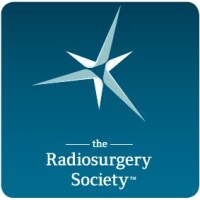About The radiosurgery society
The Radiosurgery Society: Advancing the Science and Clinical Practice of SRS and SBRT
The Radiosurgery Society is a non-profit organization that brings together surgeons, radiation oncologists, physicists, and allied professionals who are committed to advancing the science and clinical practice of stereotactic radiosurgery (SRS) and stereotactic body radiation therapy (SBRT). The society was founded in 2002 with the aim of promoting research, education, and collaboration among its members to improve patient outcomes.
Stereotactic radiosurgery is a non-invasive form of radiation therapy that uses highly focused beams of radiation to treat tumors or other abnormalities in the brain or other parts of the body. It is an effective treatment option for patients who cannot undergo surgery due to their age or medical condition. Stereotactic body radiation therapy is a similar technique used to treat tumors outside the brain.
The Radiosurgery Society has over 1,000 members from around the world who share their expertise through various educational programs such as webinars, conferences, workshops, and online courses. The society also publishes scientific journals such as "Practical Radiation Oncology" which provides practical information on how to use SRS/SBRT in clinical practice.
One of the main goals of The Radiosurgery Society is to promote research into SRS/SBRT by providing funding opportunities for researchers. The society offers grants for both basic science research as well as clinical trials aimed at improving patient outcomes. In addition, it collaborates with other organizations such as ASTRO (American Society for Radiation Oncology) and ESTRO (European Society for Radiotherapy & Oncology) on joint initiatives aimed at advancing radiotherapy techniques.
The society also plays an important role in advocating for policies that support access to high-quality radiotherapy services. It works closely with policymakers at both national and international levels to ensure that patients have access to state-of-the-art treatments. The society also provides resources for patients and their families to help them understand the benefits and risks of SRS/SBRT.
In conclusion, The Radiosurgery Society is a vital organization that brings together experts from different fields to advance the science and clinical practice of SRS/SBRT. Its members are committed to improving patient outcomes through research, education, and collaboration. With its focus on innovation and advocacy, The Radiosurgery Society is poised to play an increasingly important role in shaping the future of radiotherapy.
